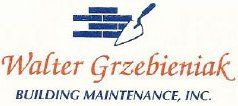4 Different Types of Masonry Restoration Techniques
Masonry restoration is the process of repairing and restoring masonry units, usually bricks, to sound and stable conditions. There are a number of different techniques that can be used for masonry restoration, each with its own advantages and disadvantages. We will explore several of the most common masonry restoration techniques.
1. Dispersed Hydrated Lime Injections
The dispersed hydrated lime injection technique is a popular masonry restoration technique that was developed in Germany. It involves injecting a dispersion of hydrated lime into the masonry unit, which then reacts with the carbon dioxide in the air to form calcium carbonate. This process strengthens the masonry unit and can also help to repair any damage that has been caused by drying out. According to Masonry Magazine, it has been used effectively in the United States for more than 15 years.
2. Hydraulic Mortars
Hydraulic mortars are made from Portland cement, sand, and water, and they harden by reacting with water rather than air. This makes them a great option for masonry repairs, as they can be easily applied to wet or damp masonry units. They are also very strong and durable, making them ideal for use in structural repairs.
3. Polymer-Modified Cement
Masonry repair using polymer-modified cement is another option for masonry restoration. This technique uses a Portland cement-based mortar that has been modified with a synthetic polymer. This gives the mortar increased strength and flexibility, making it ideal for use in masonry repairs. It's also resistant to water and chemicals, so it's an excellent choice for areas that are exposed to the elements.
4. Adhesives
Masonry repair using an adhesive is another option. This technique uses an adhesive to bond the masonry unit to a new mortar or concrete. However, it's important to note that adhesives can degrade over time and may not be as durable as other masonry restoration techniques.
Each of these techniques has its own benefits, and there are other options to choose from, so it's important to choose the one that best suits your needs. If you're looking for a company to provide high-quality masonry restoration services, Contact Walter Grzebieniak Building Maintenance Inc. Our team of experts would be happy to help you choose the right option for your masonry restoration project.



Share On: